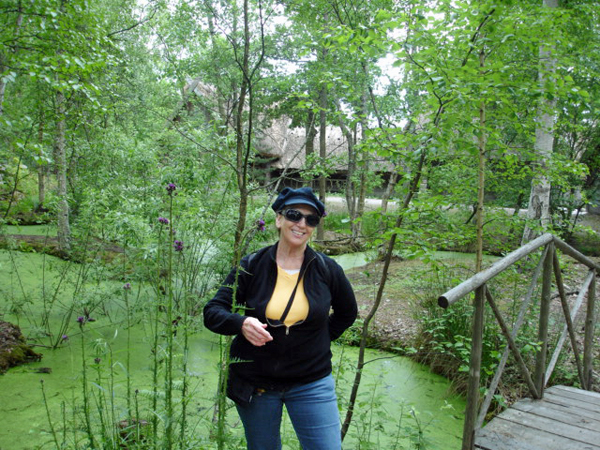Skansen - June 22, 2008
|
|
Skansen ("the Sconce") is located on the island Djurgården
in Stockholm, Sweden. The term "skansen" has become a generic
term referring to open-air activities and concerts. While here, Karen
Duquette enjoyed Kagelbanan, a Swedish venue for open-air concerts
and events plus the Swedish dancers and lots more.
|
|
|
|
|
Kägelbanan is an incredibly important
venue for Stockholm with all its history and great artists who have
performed here. It has a capacity of close to 1,000 spectators. No artists
were performing here on this date. |
|
|
Below: The Swedish Maypole.The festivals
may occur on 1 May, although this was a Midsummer event (20–26
June). The traditions surrounding the maypoles vary locally, as does
the design of the poles, although the design featuring a cross and two
rings is most common. Common in all of Sweden are traditional ring dances,
mostly in the form of dances where participants alternate dancing and
making movements and gestures based on the songs, such as pretending
to scrub laundry while singing about washing, or jumping as frogs during
the song Små grodorna ("The little frogs"). Ring dancing
is mostly popular with small children. The central part played by young
children in the celebration emphasizes the procreation aspect of the
celebration. Yet another pointer in this direction is the custom that
young maidens expect to dream of their future mate if they pick seven
different flowers and place them under their pillow when they go to
bed on this day only. |
|
At Skansen, Midsummer is celebrated every year with
traditions from all around Sweden and various folk activities. Ever
since the first year when Skansen was opened, Midsummer has been celebrated
in the old, traditional way, by dressing the maypole and dancing around
it, as well as folk dances by young people in folk costume in the
dance area.
|
|
|
|
|
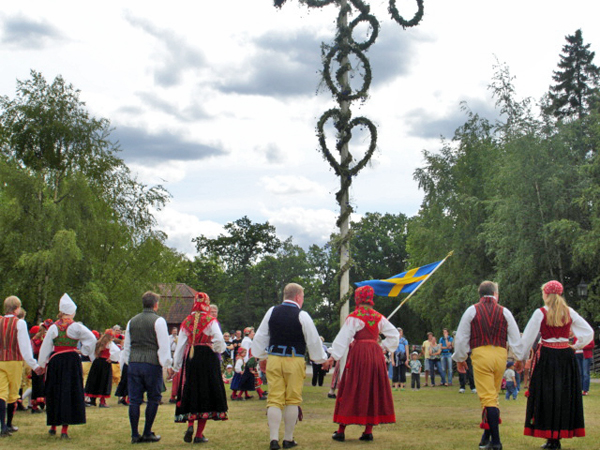
|
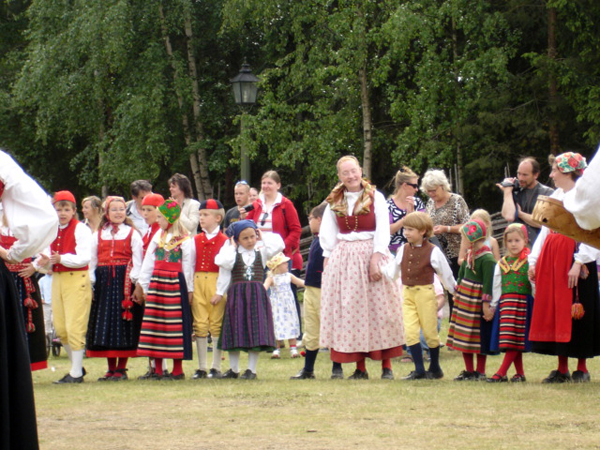
|
Below: They are not asking each other to
dance, but they are each asking a child to join them in the celebration. |
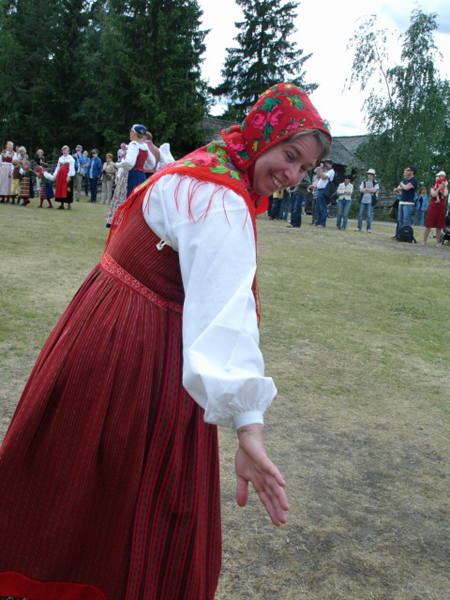 |
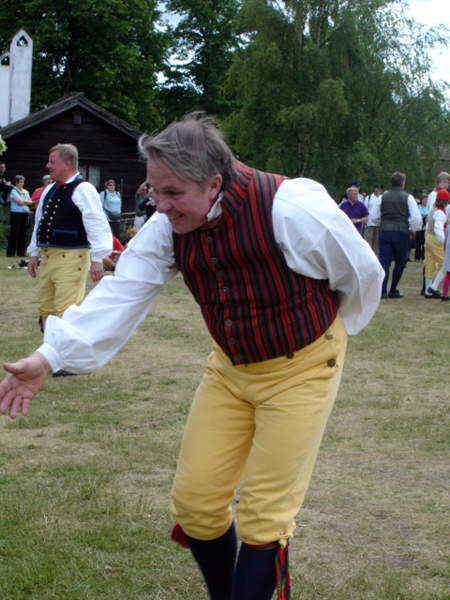 |
Below: As people from the audience,, joined in, and
tried to imitate what the Skansen dancers were doing. Karen Duquette
took a few more photos and then she, too, joined the fun. |
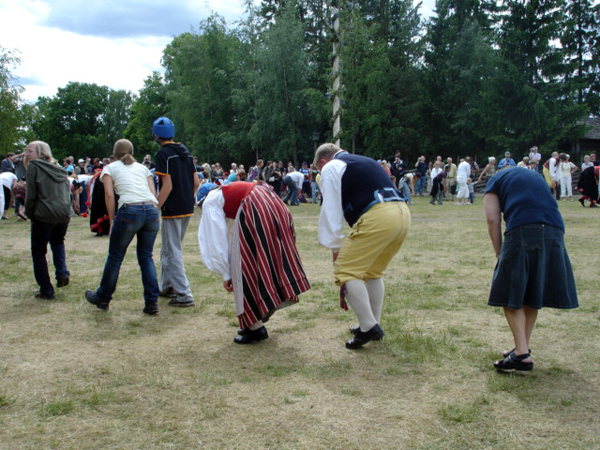 |
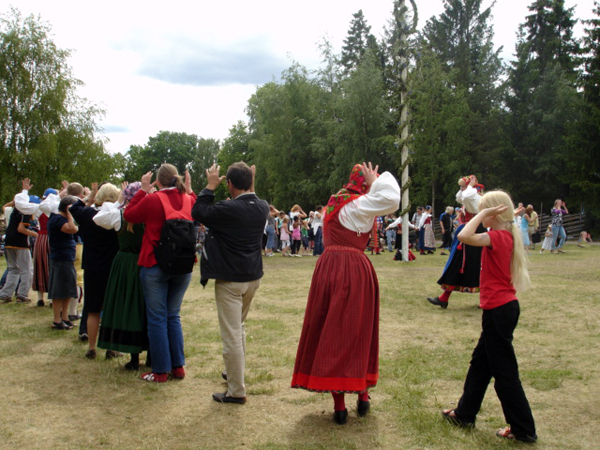 |
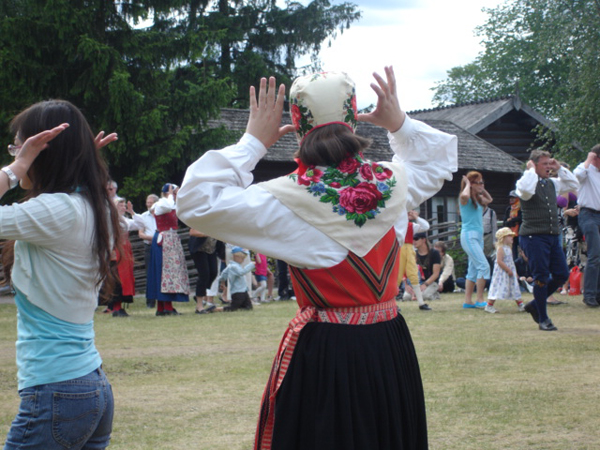
|
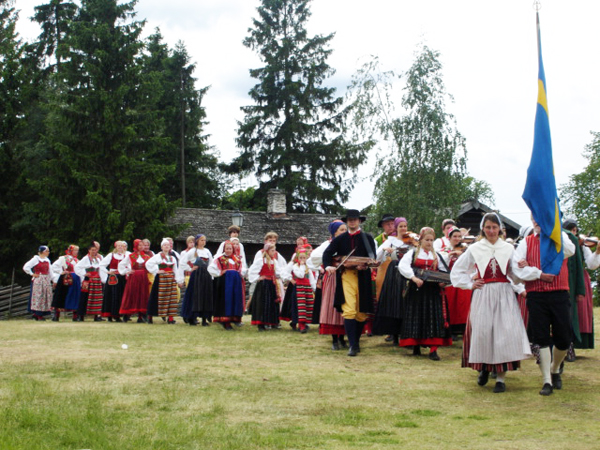 |
Below: Then the musicians came down from the stage
to join the ceremony, as they played their instruments and walked a
big circle before going back on stage. |
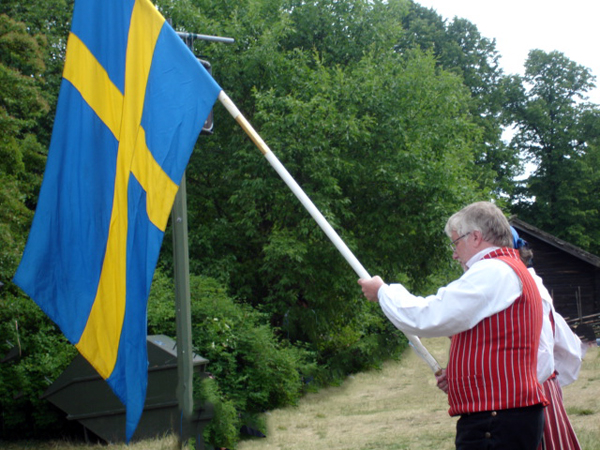 |
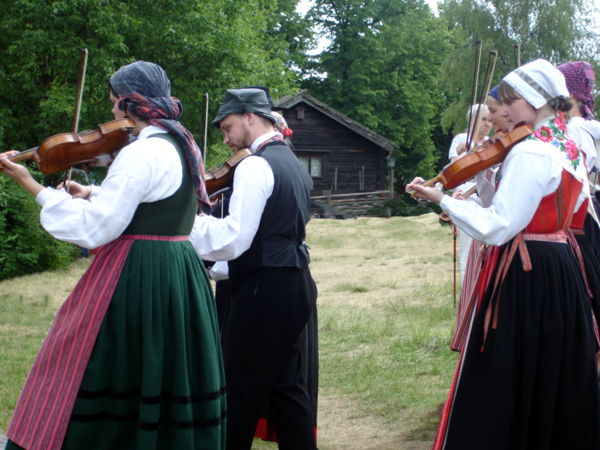 |
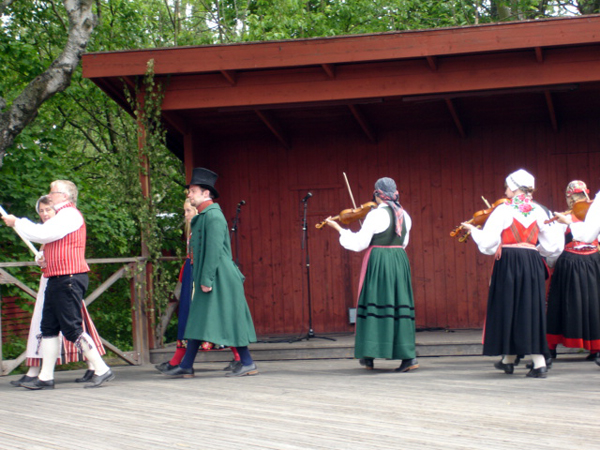 |
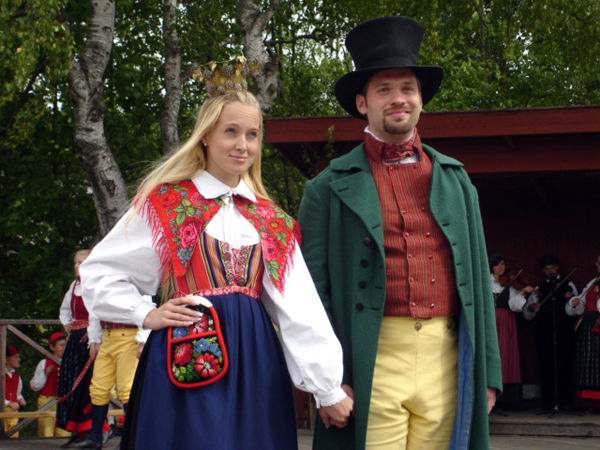 |
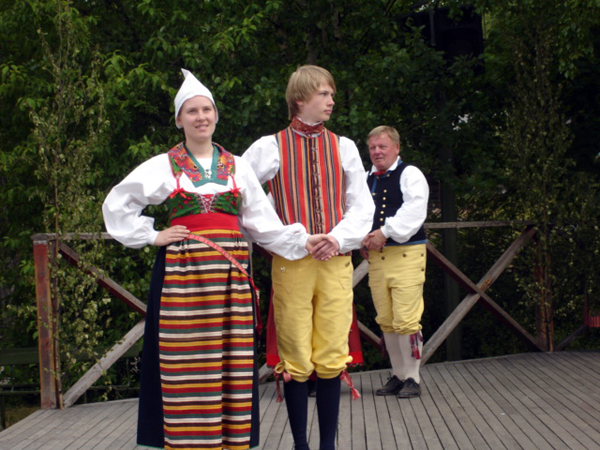 |
Below: Native dancing was a delight to watch. |
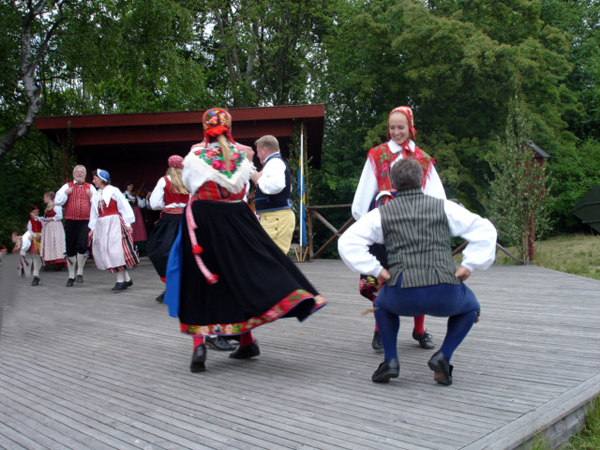 |
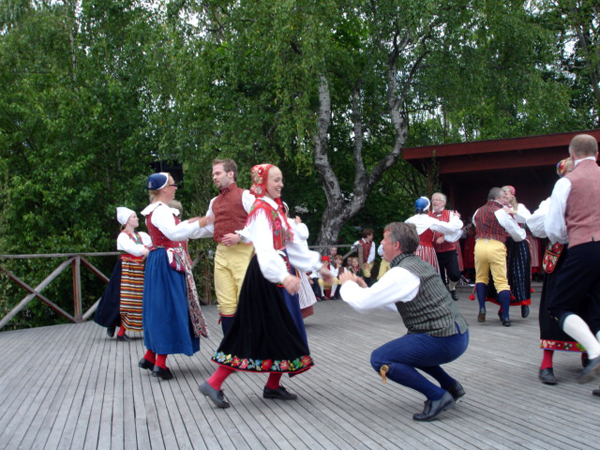 |
Below: Some wonderful singing to end the event. |
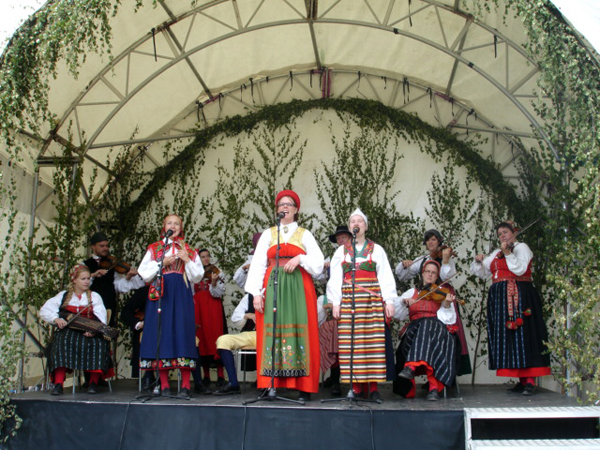 |
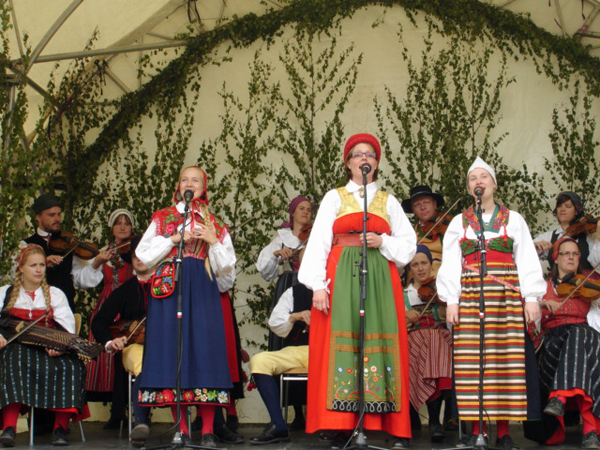 |
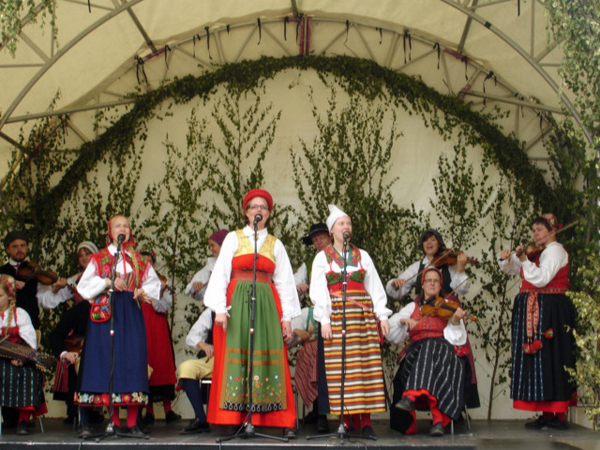 |
 |
Below: A rune stone is a raised stone with a runic
inscription. The tradition began in the 4th century and lasted into
the 12th century, but most of the rune stones date from the late Viking
Age. Most rune stones are located in Scandinavia, but there are also
scattered rune stones in locations that were visited by Norsemen during
the Viking Age. Rune stones are often memorials to dead men. Rune stones
were usually brightly colored when erected, though this is no longer
evident as the color has worn off. Most rune stones were erected during
the period 950–1100 CE, and then they were mostly raised in Sweden,
and to a lesser degree in Denmark and Norway. |
|
|
 |
Below: Windmills |
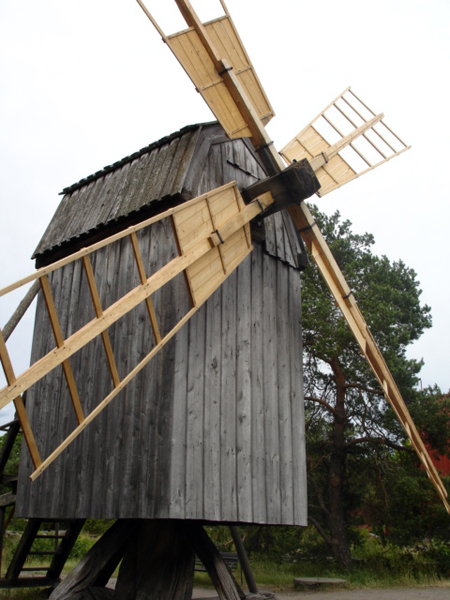 |
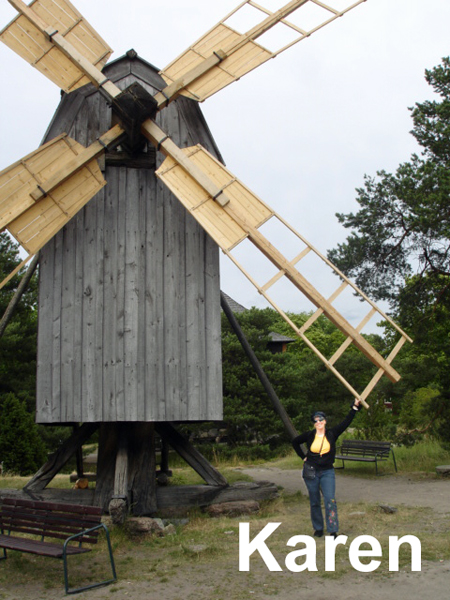 |
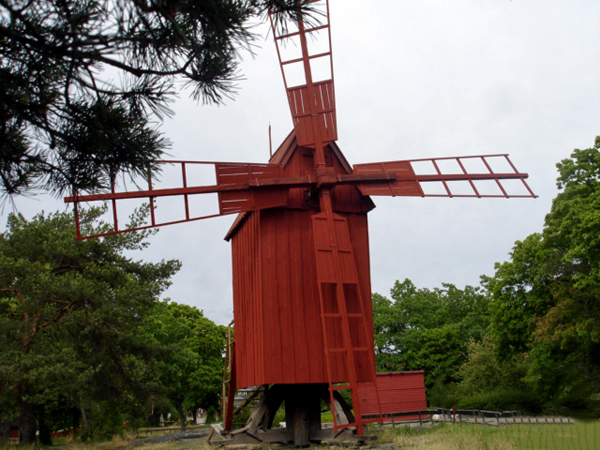 |
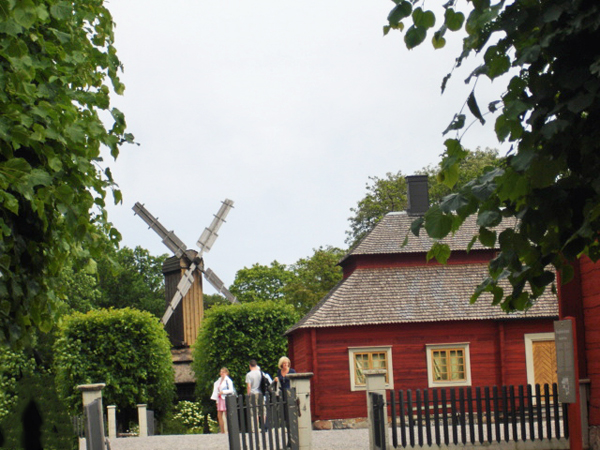 |
Below: Monica Ekedahl and Bitte Svensson |
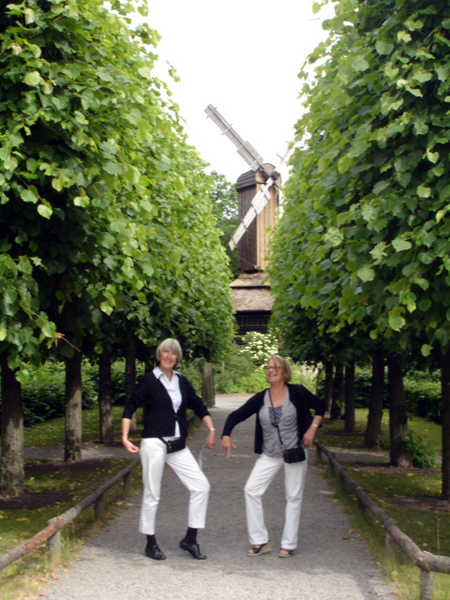 |
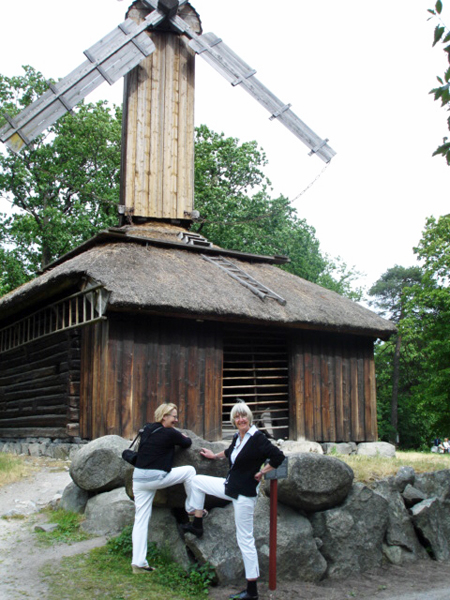 |
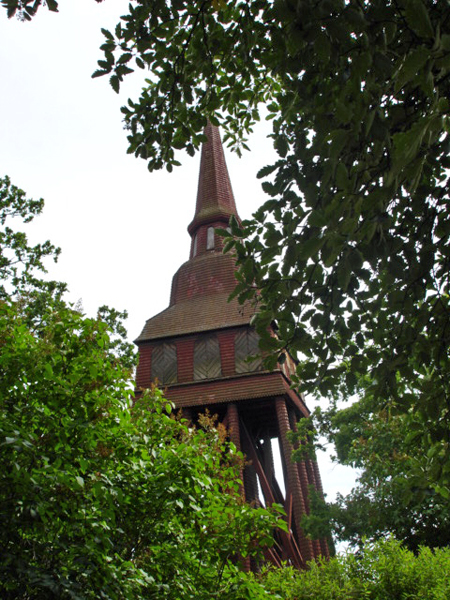 |
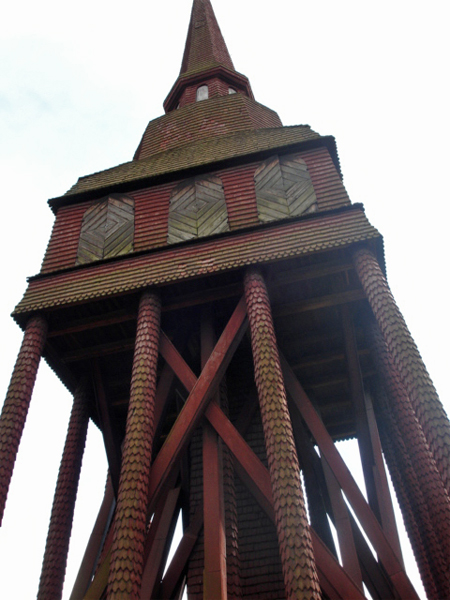 |
| |
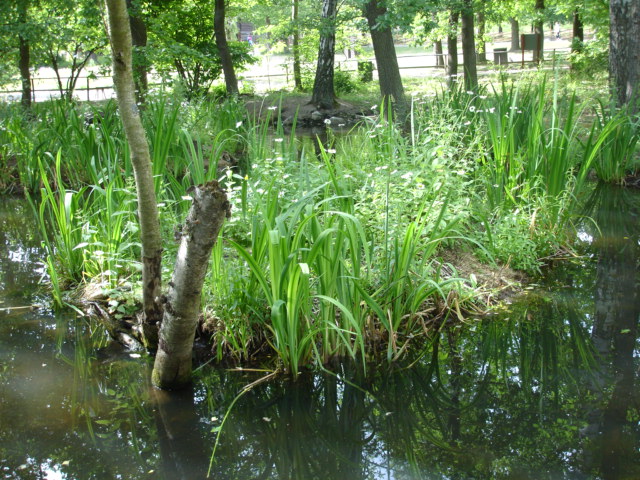 |
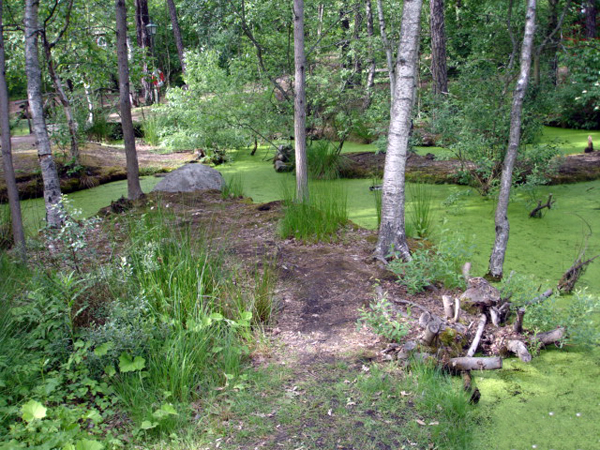 |
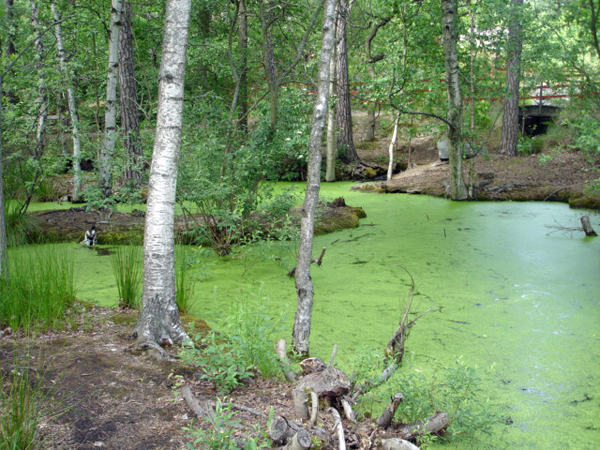 |
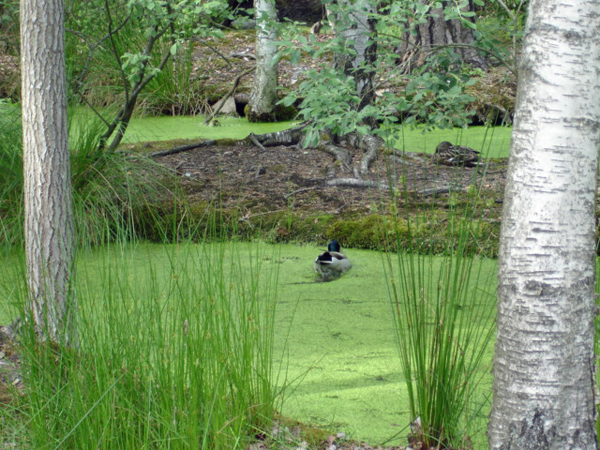 |
Below: Animals also thrive on the the island of Djurgården. |
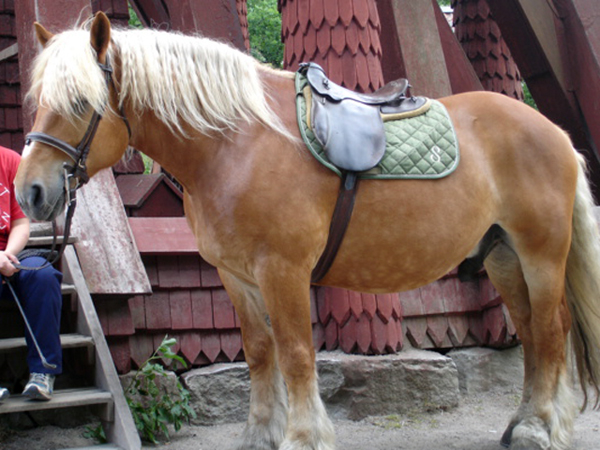
|
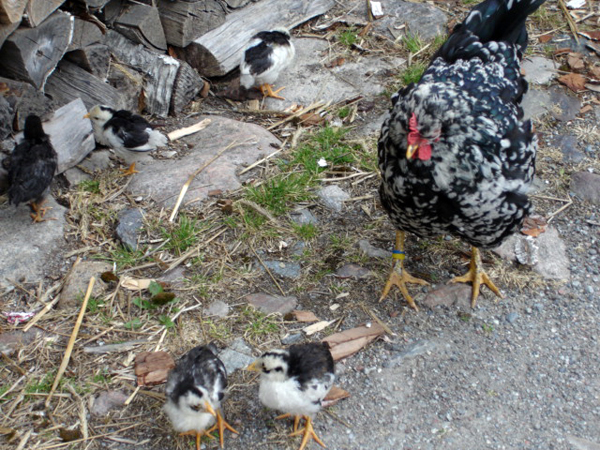 |
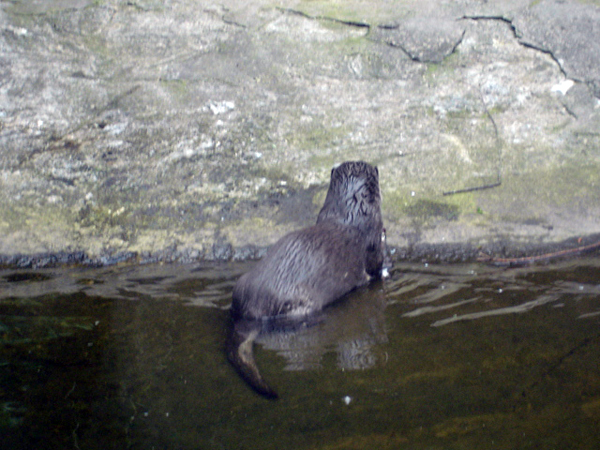 |
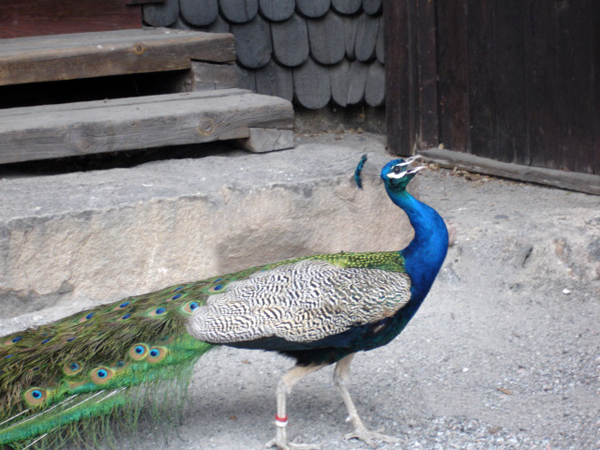 |
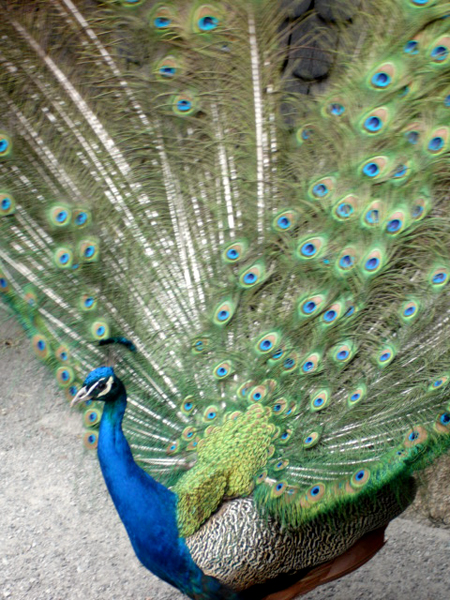 |
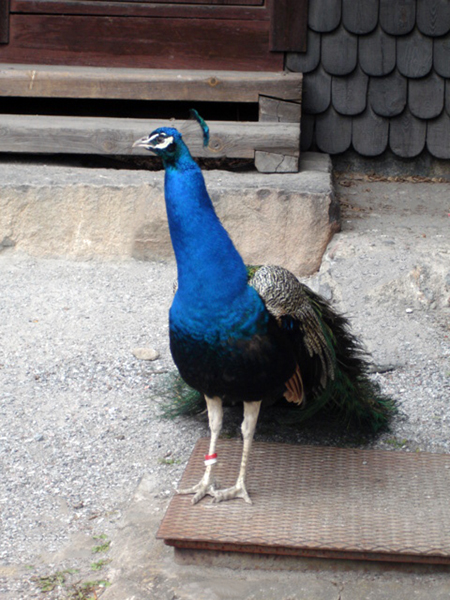 |
 Karen
Duquette played with the peacock Karen
Duquette played with the peacock
|
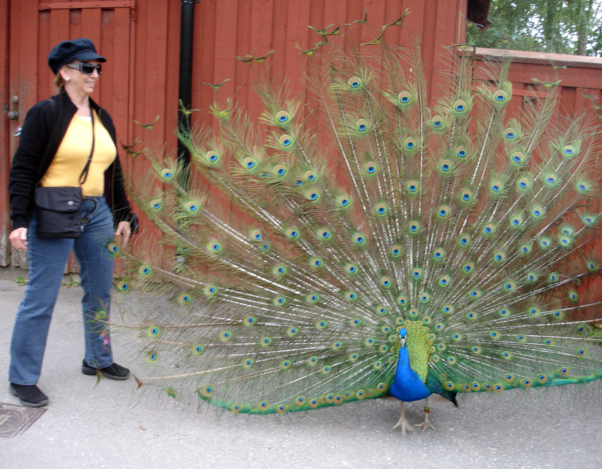 |
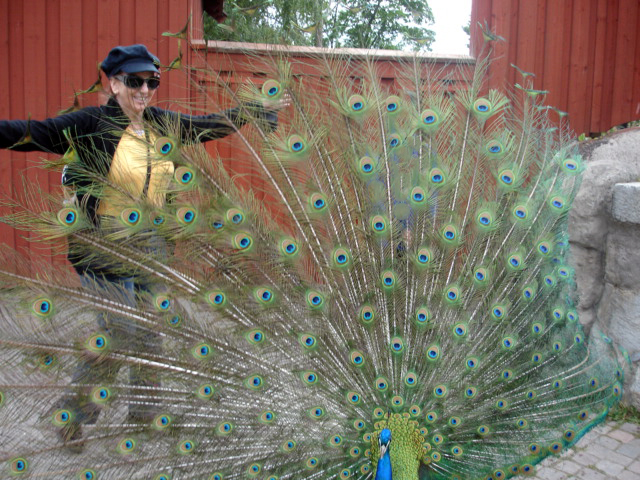 |
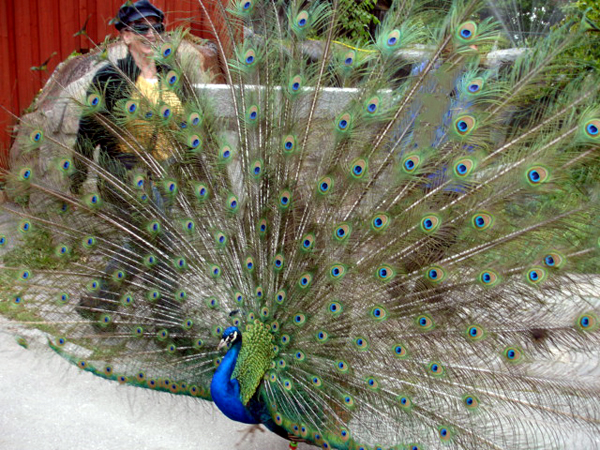 |
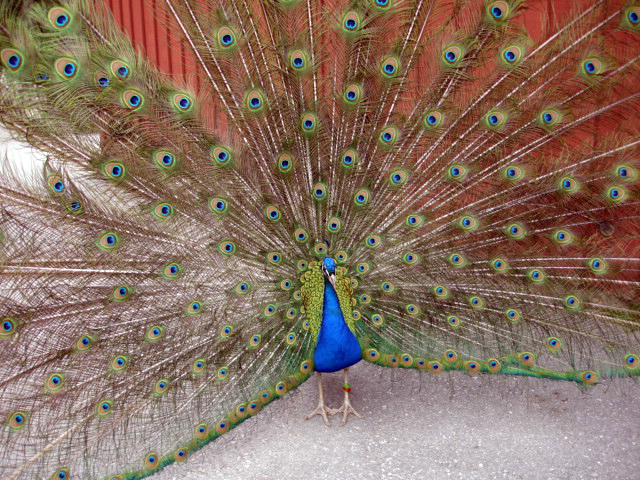 |
Below: Another peacock, a lot smaller than the one above. |
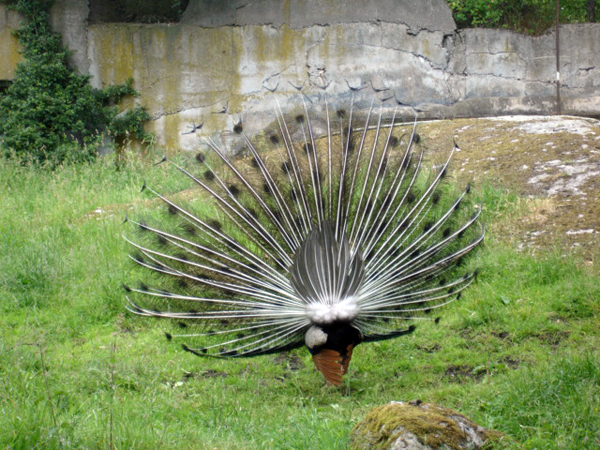 |
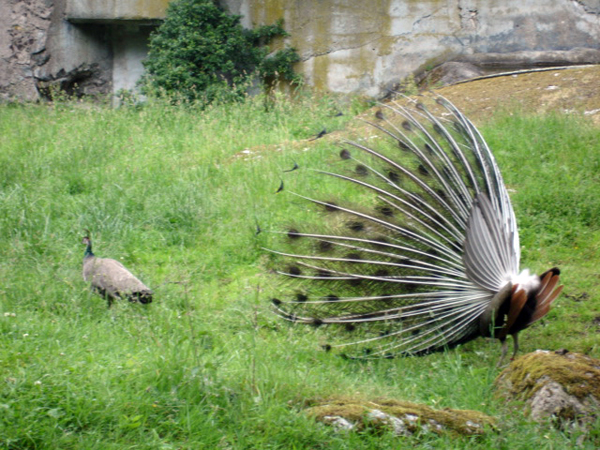 |
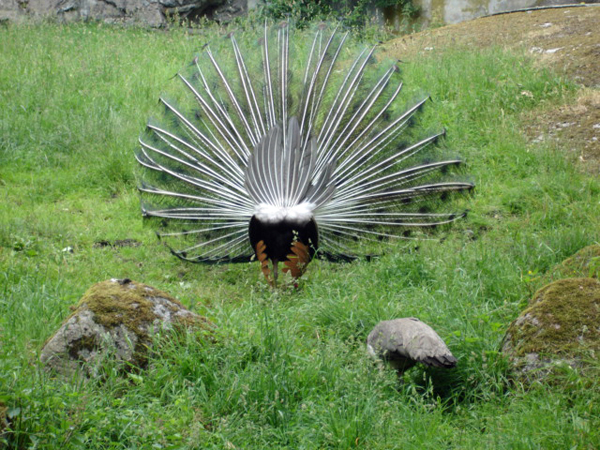 |
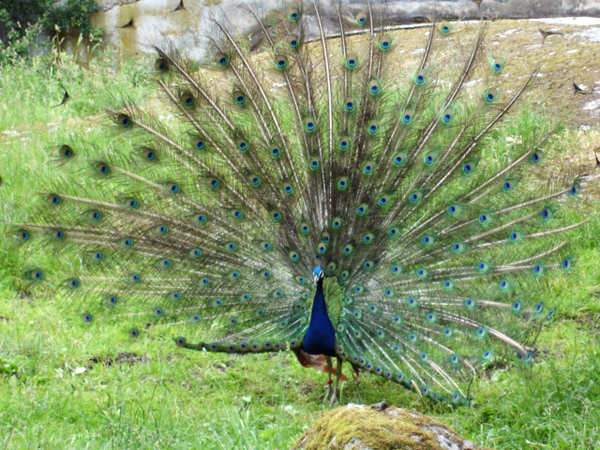 |
Below: Another Peacock |
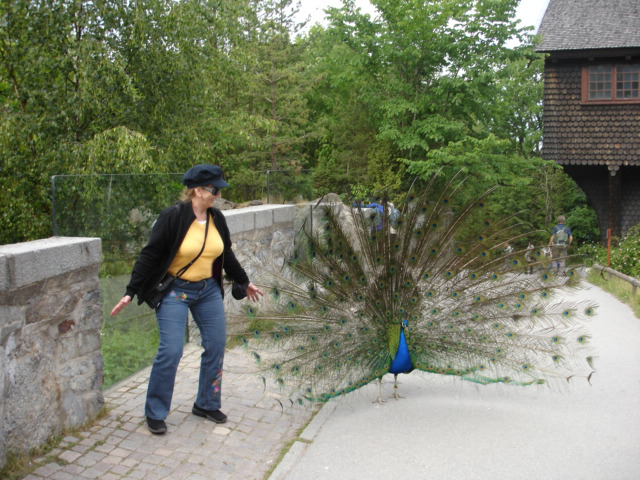 |
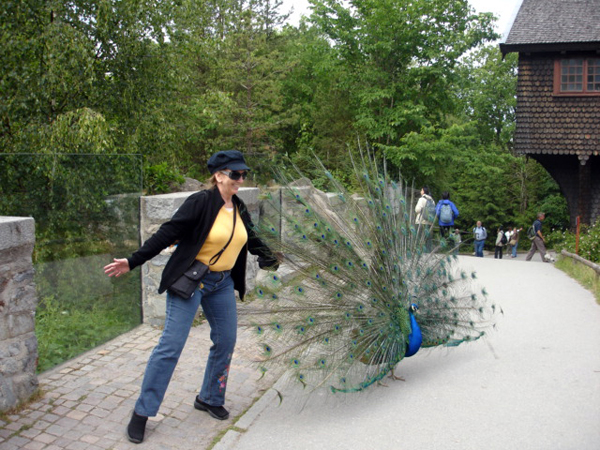 |
|
Below: The Sámi (SAH-mee; also
spelled Sami or Saami) are the traditionally Sámi-speaking peoples
inhabiting the region of Sápmi, which today encompasses large
northern parts of Sweden as well as Norway, Finland, and of the Kola
Peninsula in Russia.
Since 1992, Sámi National Day has been celebrated on 6 February
because on that day in 1917, the first Sámi congress took place
in Trondheim, Norway. The national holiday is also called ‘Samenes
Nasjonaldag.’ The Sámi people, or ‘Urbefolkning’
in Norwegian, are indigenous people who live mainly in Norway, but also
in Finland, Russia, and Sweden. Of course, Karen Duquette will not be
able to still be here come February. But she did get to learn about
the Sami people and go inside the Sam ic timber-hut. |
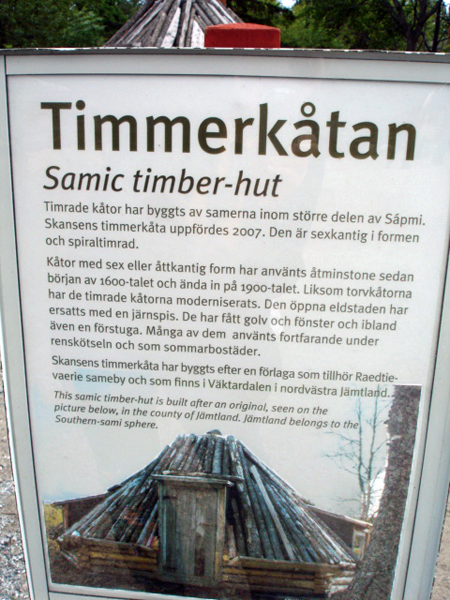 |
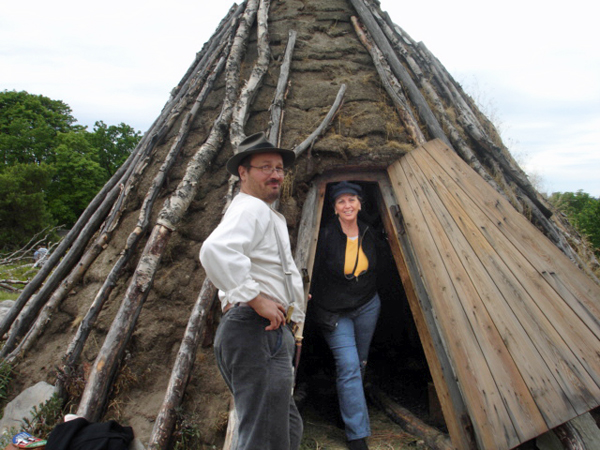 |
Below: A raised hut is also part of
a Sami Village. |
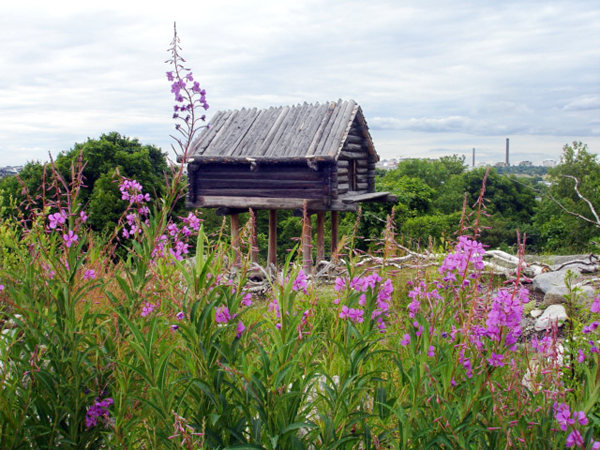 |
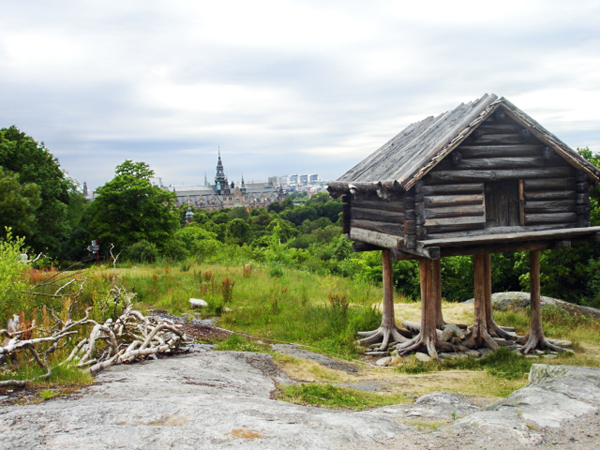 |
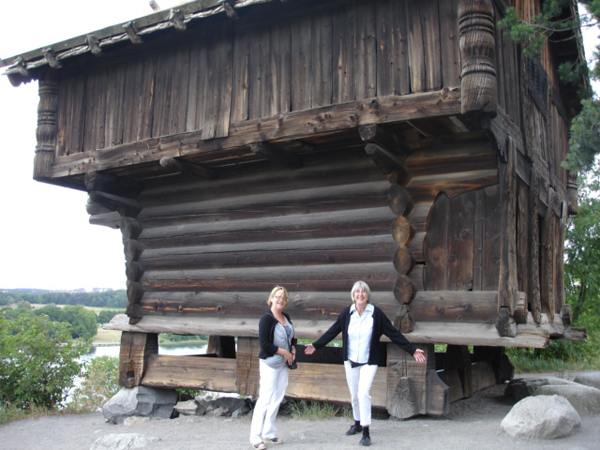 |
 |
A Dalecarlian horse or Dala horse is a traditional carved, painted
wooden statue of a horse originating in the Swedish province of Dalarna
(Dalecarlia). In the old days the Dalecarlian horse was mostly used
as a toy for children; in modern times it has become a symbol of Dalarna,
as well as of Sweden in general. Several types of Dalecarlian horses
are made, with distinguishing features common to the locality of the
site where they are produced. One particular style has, however, become
much more common and widespread than others. It is stoutly carved
and painted bright red with details and a harness in white, green,
yellow and blue.
|
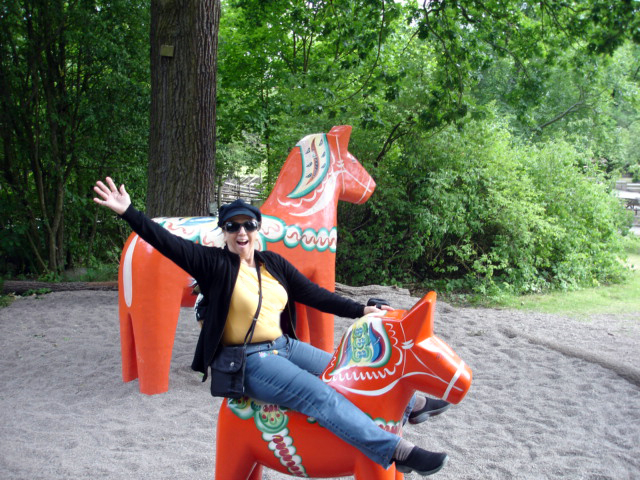 |
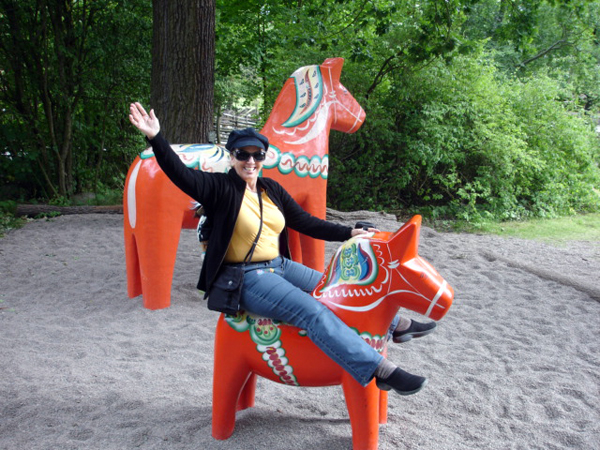 |
 |
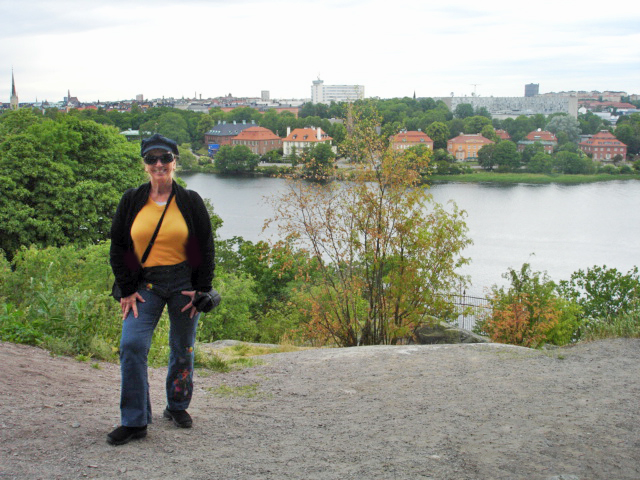 |
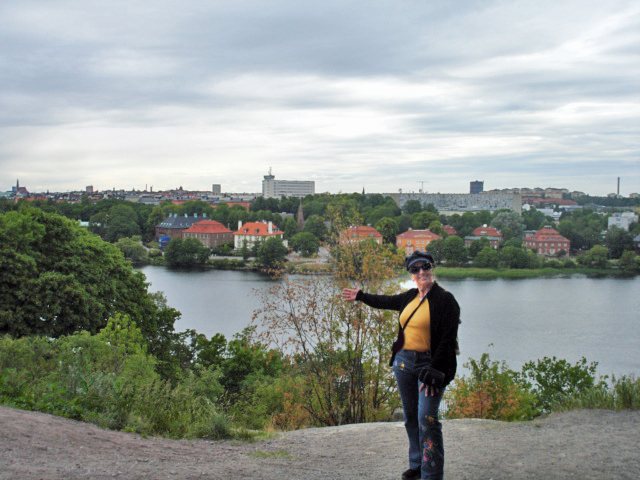 |
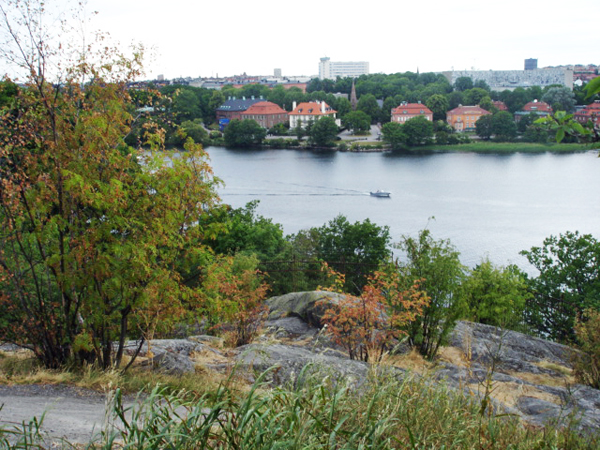 |
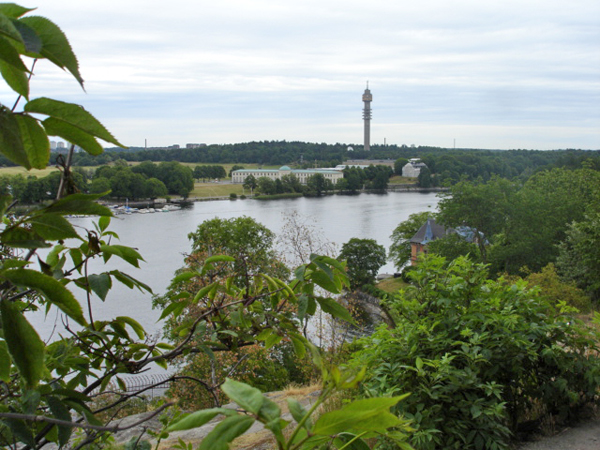 |
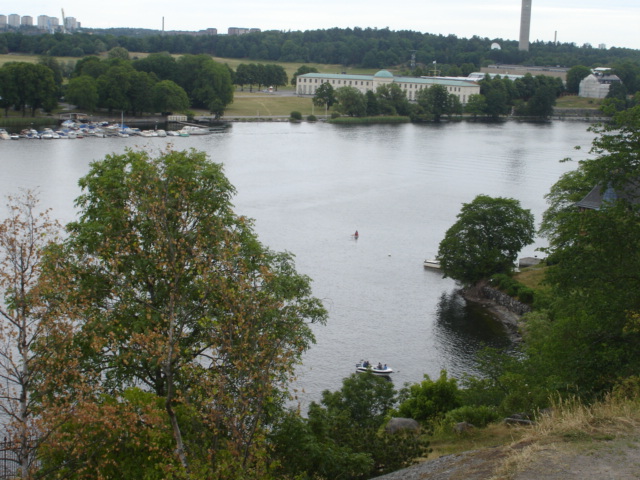 |
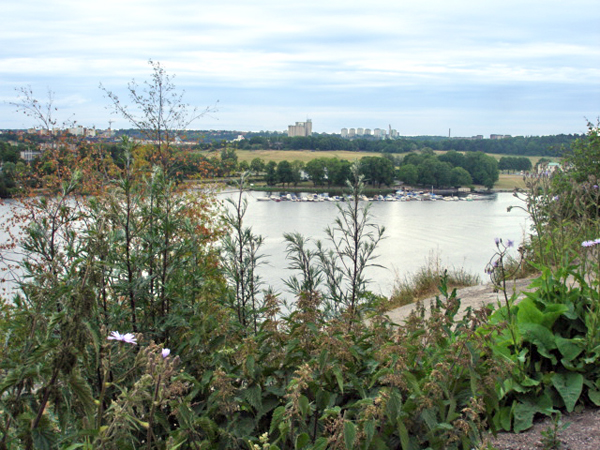 |
Below: Bears in the Skansen Zoo. Skansen
is home to wild Nordic animals such as brown bears, moose, lynxes, wolverines,
seals and otters. |
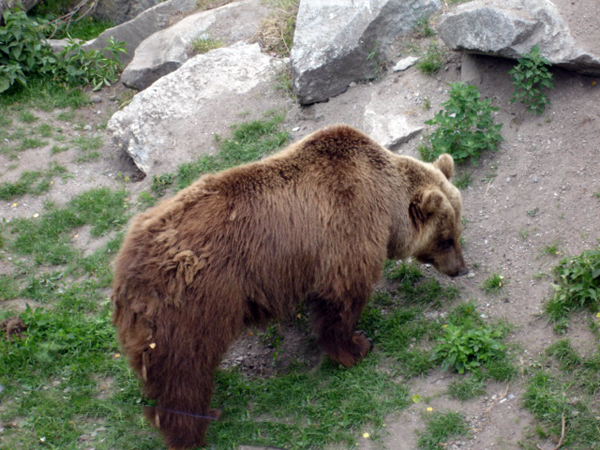 |
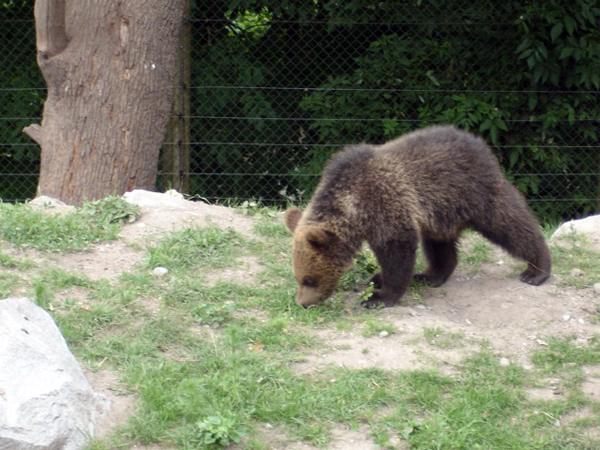 |
OH NO !!! One of the bears grabbed Karen
Duquette. |
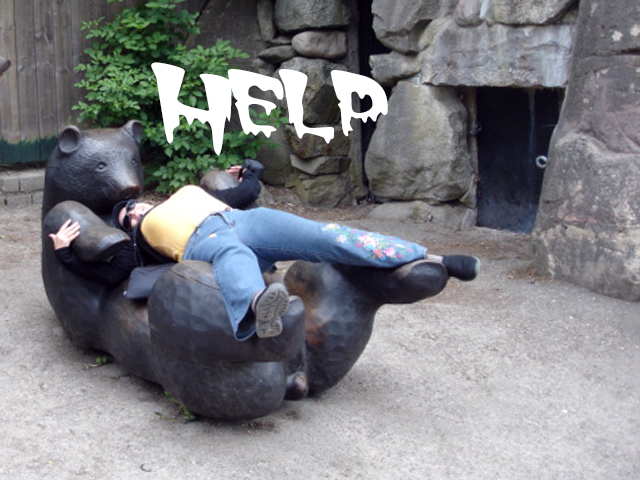  |
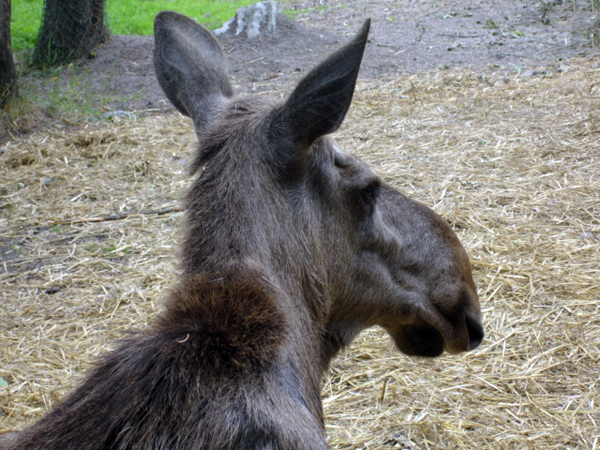 |
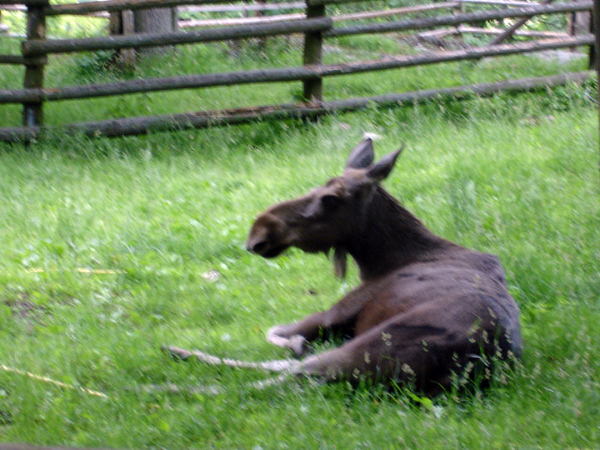 |
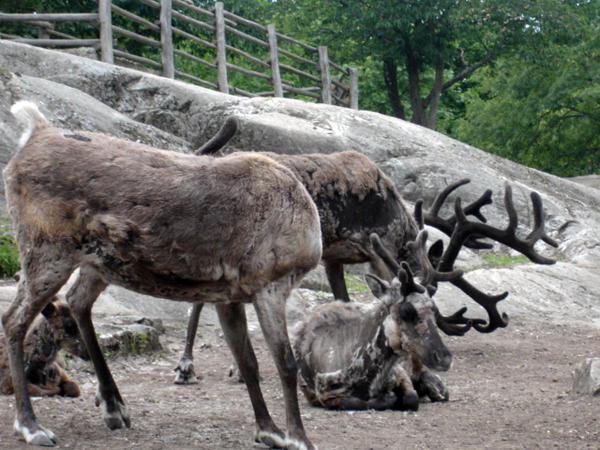 |
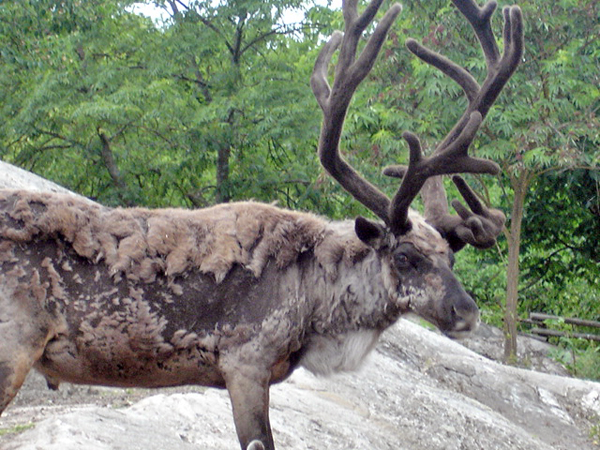 |



























